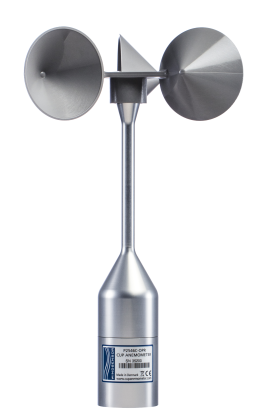Contrasting Digital and Mechanical Anemometers: Which is Right for You?
Contrasting Digital and Mechanical Anemometers: Which is Right for You?
Blog Article
Anemometers Unveiled: Recognizing Their Importance in Environmental Tracking and Precaution
The duty of anemometers in ecological surveillance and security steps is typically ignored, yet their importance is indisputable. These tools have a lengthy background rooted in scientific query and technical innovations, evolving to end up being important devices in various areas. From weather forecasting to aeronautics safety and security, anemometers play an important duty in giving exact data that informs decision-making processes and improves total safety and security. Comprehending the details of anemometers introduces a world of important understandings that are fundamental to our understanding of the environment and the measures we take to make sure safety.
History of Anemometers
The advancement of anemometers can be mapped back to the ancient people where primary wind determining gadgets were very first utilized. One of the earliest well-known anemometers was the hemispherical cup anemometer created by Leon Battista Alberti in the 15th century.
In the 18th century, the prominent researcher John Thomas Romney Robinson introduced the Robinson anemometer, which included four hemispherical mugs mounted on straight arms that prolonged from a main axis. This design became a standard in atmospheric dimensions because of its accuracy and integrity. Throughout the years, advancements in technology brought about the growth of even more contemporary anemometers, consisting of ultrasonic anemometers and laser Doppler anemometers, providing increased accuracy and efficiency in gauging wind speed and instructions. The history of anemometers showcases an exceptional journey of technology and progression in the field of weather forecasting.
Kinds Of Anemometers
Throughout the field of weather forecasting, various sorts of anemometers have been developed to properly determine wind speed and direction. One of the most usual kind is the mug anemometer, which contains 3 or four cups mounted on horizontal arms that revolve with the wind. As the cups spin, the rate at which they turn is straight proportional to the wind speed. One more widely used type is the vane anemometer, which includes a tail or fin that aligns itself with the wind instructions. This positioning allows the tool to identify the wind instructions. Sonic anemometers make use of ultrasonic signals to gauge wind speed and instructions precisely. They are generally used in research applications as a result of their high accuracy. Hot-wire anemometers run based upon the principle that the cooling result of wind on a warmed cord is symmetrical to the wind speed. These anemometers are appropriate for determining reduced wind speeds with high precision. Each type of anemometer has its strengths and is chosen based upon the particular needs of the surveillance job available.
Applications in Meteorology
Having talked about the different kinds of anemometers utilized in weather forecasting for determining wind speed and instructions, it is necessary to explore their functional applications in the area. Anemometers play a critical duty in meteorology by providing real-time and exact data on wind problems (anemometer). Meteorologists make use of anemometers to keep track of wind rate and direction to forecast climate patterns, issue cautions for serious climate occasions like storms, twisters, and tornados, and analyze climatic conditions for aeronautics safety
In weather forecasting, anemometers assist in comprehending regional and regional wind patterns, which are essential for anticipating weather condition changes and determining climatic patterns. These gadgets are likewise used in study to study microclimates, metropolitan warm islands, and air pollution dispersion. Additionally, anemometers are used in farming to maximize plant administration techniques, such as irrigation and chemical application, based on wind conditions.
Relevance in Aviation Safety And Security
An indispensable aspect of making sure aviation safety lies in the meticulous tracking of wind conditions making use of anemometers. Anemometers play a critical role in aviation by providing real-time information on wind speed and direction, helping pilots in making informed choices during trip, landing, and liftoff. Uncertain and strong winds can dramatically affect airplane operations, making it necessary for aeronautics authorities to rely on precise wind measurements to guarantee the safety of guests and crew.

In the dynamic environment of aeronautics, where also minor adjustments in wind speed and instructions can have extensive impacts, anemometers stand as important tools for promoting safe and secure and secure flight.
Duty in Environmental Research
Anemometers play an essential duty in environmental research by providing important information on wind rate and instructions. By properly measuring wind attributes, anemometers help researchers evaluate the activity of pollutants in the air, evaluate the effect of industrial discharges, and predict the spread of pollutants in the environment.


Verdict
In verdict, anemometers have actually played an essential duty in environmental check my blog monitoring and security steps. Understanding the relevance of anemometers is vital for properly determining wind rate and direction, which is essential for anticipating climate patterns, ensuring safe aeronautics operations, and carrying out environmental studies.
One of the earliest recognized anemometers was the hemispherical cup anemometer created by Leon Battista Alberti in the 15th look what i found century. Over the years, improvements in innovation led to the development of more contemporary anemometers, consisting of ultrasonic anemometers and laser Doppler anemometers, offering raised precision and performance in measuring wind speed and direction. Hot-wire anemometers run based on the principle that the cooling effect of wind on a warmed cable is proportional to the wind rate. Meteorologists make use of anemometers to monitor wind speed and direction to forecast weather condition patterns, concern warnings for serious weather condition occasions like tornados, storms, and twisters, and analyze atmospheric conditions for air travel safety.
Comprehending the importance of anemometers is crucial for precisely determining wind rate and instructions, which is vital for anticipating weather patterns, ensuring risk-free air travel operations, Click This Link and conducting environmental research studies. (anemometer)
Report this page